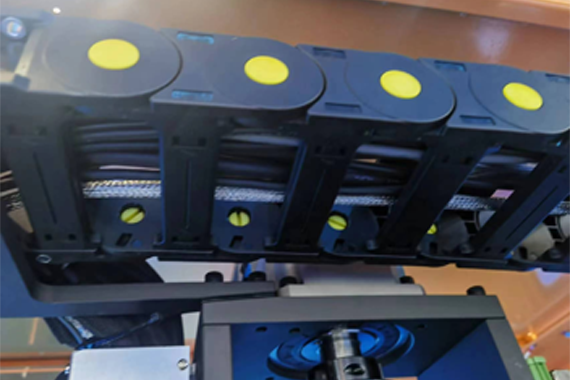YEAHUI ELECTRONIC LIMITED Yeahui Cable, connector to the world!
Home / blog
In order to prevent the cable from being entangled, frayed, broken, hooked and scattered, the cable is often put into the cable towline to protect the cable. This highly flexible special cable, which moves back and forth with the drag chain, is not easy to wear, and is called a drag chain cable.
Drag chain cables are mainly used in: industrial electronic systems, automatic power generation lines, storage devices, robots, fire protection systems, cranes, CNC machine tools and metallurgical industries.

In order to keep moving back and forth, drag chain cables usually consist of the following components:
1. Stretch center
Depending on the number of cores and the space within the area where each core wire intersects, fill as much as possible in the center of the cable with the true center wire (rather than filling it with some filler or junk core wire made from scrap plastic, as is often the case).
2. Conductor structure
Cables should choose more flexible conductors. Generally speaking, the thinner the conductor, the more flexible the cable, but if the wire is too thin, it can cause tangled cables. A series of long-term tests provided a better combination of diameter, length and pitch shielding for single conductors with better tensile strength.
3. Core wire insulation chain
The insulation in the cable should not stick together. The insulation also needs to support one part of each strand of wire. Therefore, reliability can only be confirmed when high pressure molded PVC or TPE materials are used in millions of meters of cable drag.
4. Stranded wire
The strands must be wound around a stable stretch center with a finer pitch of intersection. However, due to the application of insulating materials, the structure of these strands should be designed according to the state of motion, starting from 12 core wires, so these strands should be strung together.
5. Inner sheath
Armored extruded inner cover replaces cheap fleece, wadding or trims. This method can ensure that the wire will not be scattered.
6. Shielding
With the optimization of the braiding angle, the tight braiding of the outer shielding layer of the inner sheath, the loose braiding will reduce the EMC protection ability, and the shielding layer will soon fail due to shielding breakage. The tightly braided shield is also resistant to torsion.
7. Outer sheath
Outer sheaths made of different modified materials have different functions, UV resistance, low temperature resistance, oil resistance and cost optimization. But all of these outer sheaths have one thing in common, high abrasion resistance, and don't stick to anything. The shell had to be highly flexible, but also have a support function and, of course, should be high pressure formed.



